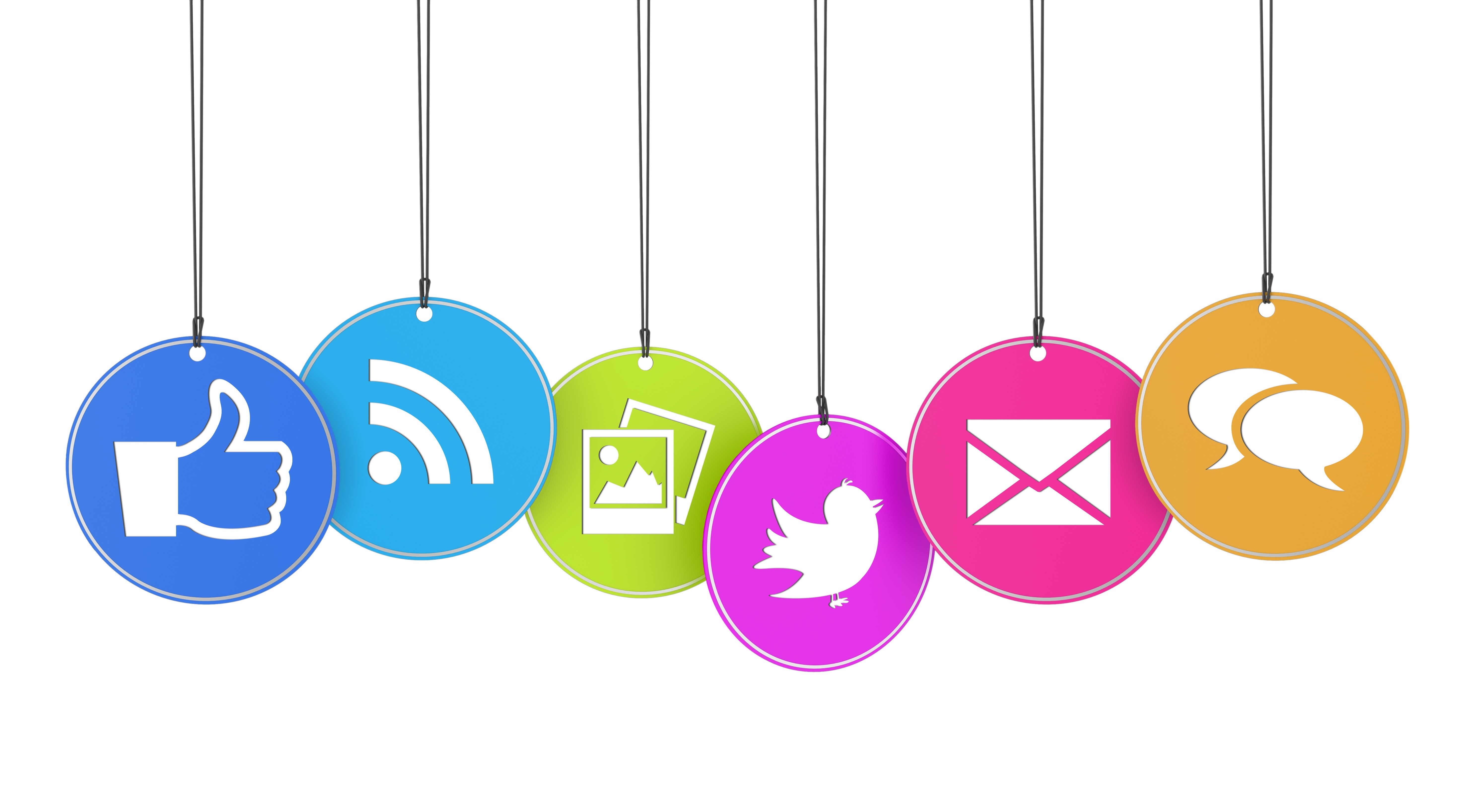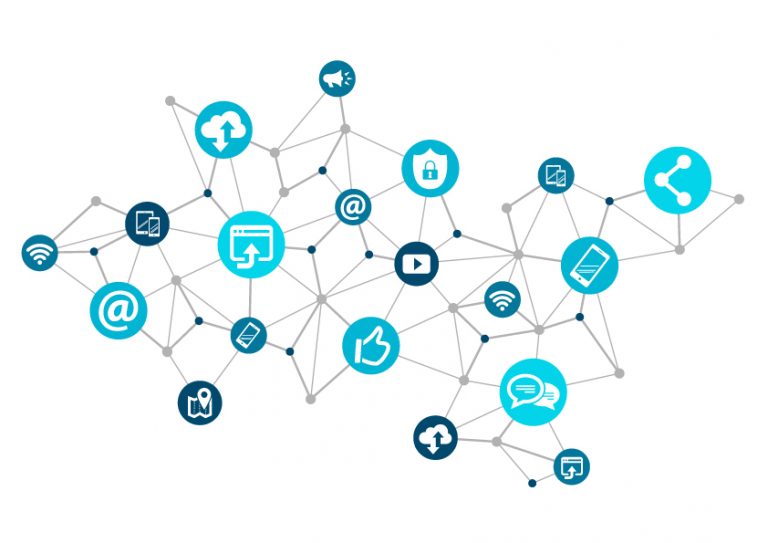Pros and Cons of Social Media Before, During and After a Crisis
When a crisis, such as a natural disaster, affects the public, social media will always come into play.
While social media is an increasingly vital aspect of crisis communications, it usually does not exist on its own. Social media supplements and enhances other, more traditional communications, whether it’s a siren alert or a TV news broadcast.
In addition to its many powerful, desirable characteristics, social media, like traditional communications platforms, also has limitations and disadvantages:
Social media advantages for crisis communications
[et_pb_blurb url_new_window=”off” use_icon=”on” font_icon=”%%47%%” icon_color=”#7EBEC5″ use_circle=”off” circle_color=”#7EBEC5″ use_circle_border=”off” circle_border_color=”#7EBEC5″ icon_placement=”left” animation=”left” background_layout=”light” text_orientation=”left” use_icon_font_size=”off” use_border_color=”off” border_color=”#ffffff” border_style=”solid” background_position=”top_left” background_repeat=”repeat” background_size=”initial”]
Before a disaster affecting the public strikes, social media provides organizations with a powerful tool for building trust among people who use social media by developing constructive dialogues in social media communities. Emergency managers in particular are thus able to establish their social media presence as a go-to source for authoritative public information during a natural disaster.
[/et_pb_blurb]
Social media disadvantages for crisis communications
[et_pb_blurb url_new_window=”off” use_icon=”on” font_icon=”%%46%%” icon_color=”#7EBEC5″ use_circle=”off” circle_color=”#7EBEC5″ use_circle_border=”off” circle_border_color=”#7EBEC5″ icon_placement=”left” animation=”left” background_layout=”light” text_orientation=”left” use_icon_font_size=”off” use_border_color=”off” border_color=”#ffffff” border_style=”solid” background_position=”top_left” background_repeat=”repeat” background_size=”initial”]
Unauthorized or inept use of the social media platform by the organization’s personnel could be damaging to credibility and ability to earn trust. Effective use of social media requires a commitment to policies and resources.
[/et_pb_blurb][et_pb_blurb url_new_window=”off” use_icon=”on” font_icon=”%%47%%” icon_color=”#7EBEC5″ use_circle=”off” circle_color=”#7EBEC5″ use_circle_border=”off” circle_border_color=”#7EBEC5″ icon_placement=”left” animation=”left” background_layout=”light” text_orientation=”left” use_icon_font_size=”off” use_border_color=”off” border_color=”#ffffff” border_style=”solid” background_position=”top_left” background_repeat=”repeat” background_size=”initial”]
Reinforces crisis alerts being sent to the public through traditional routes, e.g., sirens and traditional media, while simultaneously fostering public feedback.
[/et_pb_blurb][et_pb_blurb url_new_window=”off” use_icon=”on” font_icon=”%%46%%” icon_color=”#7EBEC5″ use_circle=”off” circle_color=”#7EBEC5″ use_circle_border=”off” circle_border_color=”#7EBEC5″ icon_placement=”left” animation=”left” background_layout=”light” text_orientation=”left” use_icon_font_size=”off” use_border_color=”off” border_color=”#ffffff” border_style=”solid” background_position=”top_left” background_repeat=”repeat” background_size=”initial”]
Many segments of the public, (e.g., elderly and infirm, economically disadvantaged, non-English speakers, etc.) do not typically use social media. Other communications channels, including, for example, door-to-door personal meetings, may be necessary in such cases.
[/et_pb_blurb][et_pb_blurb url_new_window=”off” use_icon=”on” font_icon=”%%47%%” icon_color=”#7EBEC5″ use_circle=”off” circle_color=”#7EBEC5″ use_circle_border=”off” circle_border_color=”#7EBEC5″ icon_placement=”left” animation=”left” background_layout=”light” text_orientation=”left” use_icon_font_size=”off” use_border_color=”off” border_color=”#ffffff” border_style=”solid” background_position=”top_left” background_repeat=”repeat” background_size=”initial”]
Regular monitoring of social media can help serve as an early-warning system for helping first responders identify pending disasters.
[/et_pb_blurb][et_pb_blurb url_new_window=”off” use_icon=”on” font_icon=”%%46%%” icon_color=”#7EBEC5″ use_circle=”off” circle_color=”#7EBEC5″ use_circle_border=”off” circle_border_color=”#7EBEC5″ icon_placement=”left” animation=”left” background_layout=”light” text_orientation=”left” use_icon_font_size=”off” use_border_color=”off” border_color=”#ffffff” border_style=”solid” background_position=”top_left” background_repeat=”repeat” background_size=”initial”]
Information gathered from social media users may be inaccurate. Hoaxes are prevalent. Information gathered that seems critical to public safety requires careful confirmation.
[/et_pb_blurb][et_pb_blurb url_new_window=”off” use_icon=”on” font_icon=”%%47%%” icon_color=”#7EBEC5″ use_circle=”off” circle_color=”#7EBEC5″ use_circle_border=”off” circle_border_color=”#7EBEC5″ icon_placement=”left” animation=”left” background_layout=”light” text_orientation=”left” use_icon_font_size=”off” use_border_color=”off” border_color=”#ffffff” border_style=”solid” background_position=”top_left” background_repeat=”repeat” background_size=”initial”]
Enables monitoring of timely reports from the public as well as general public opinion before, during and after a crisis.
[/et_pb_blurb][et_pb_blurb url_new_window=”off” use_icon=”on” font_icon=”%%46%%” icon_color=”#7EBEC5″ use_circle=”off” circle_color=”#7EBEC5″ use_circle_border=”off” circle_border_color=”#7EBEC5″ icon_placement=”left” animation=”left” background_layout=”light” text_orientation=”left” use_icon_font_size=”off” use_border_color=”off” border_color=”#ffffff” border_style=”solid” background_position=”top_left” background_repeat=”repeat” background_size=”initial”]
Requires increased human resources to properly monitor social media, assess it and respond appropriately. Individuals of the organization may not know procedures for flagging and reporting pertinent information gleaned from social media. Training may be necessary.
[/et_pb_blurb][et_pb_blurb url_new_window=”off” use_icon=”on” font_icon=”%%47%%” icon_color=”#7EBEC5″ use_circle=”off” circle_color=”#7EBEC5″ use_circle_border=”off” circle_border_color=”#7EBEC5″ icon_placement=”left” animation=”left” background_layout=”light” text_orientation=”left” use_icon_font_size=”off” use_border_color=”off” border_color=”#ffffff” border_style=”solid” background_position=”top_left” background_repeat=”repeat” background_size=”initial”]
Offers an additional way to track the course of a disaster and the effectiveness of the response as perceived by the public
[/et_pb_blurb][et_pb_blurb url_new_window=”off” use_icon=”on” font_icon=”%%46%%” icon_color=”#7EBEC5″ use_circle=”off” circle_color=”#7EBEC5″ use_circle_border=”off” circle_border_color=”#7EBEC5″ icon_placement=”left” animation=”left” background_layout=”light” text_orientation=”left” use_icon_font_size=”off” use_border_color=”off” border_color=”#ffffff” border_style=”solid” background_position=”top_left” background_repeat=”repeat” background_size=”initial”]
The public’s views on the disaster and the response to it could be erroneous. Immediate corrections, necessitating a commitment of communications resources, may be necessary.
[/et_pb_blurb][et_pb_blurb url_new_window=”off” use_icon=”on” font_icon=”%%47%%” icon_color=”#7EBEC5″ use_circle=”off” circle_color=”#7EBEC5″ use_circle_border=”off” circle_border_color=”#7EBEC5″ icon_placement=”left” animation=”left” background_layout=”light” text_orientation=”left” use_icon_font_size=”off” use_border_color=”off” border_color=”#ffffff” border_style=”solid” background_position=”top_left” background_repeat=”repeat” background_size=”initial”]
Another way to assess recovery progress in the wake of a disaster.
[/et_pb_blurb][et_pb_blurb url_new_window=”off” use_icon=”on” font_icon=”%%46%%” icon_color=”#7EBEC5″ use_circle=”off” circle_color=”#7EBEC5″ use_circle_border=”off” circle_border_color=”#7EBEC5″ icon_placement=”left” animation=”left” background_layout=”light” text_orientation=”left” use_icon_font_size=”off” use_border_color=”off” border_color=”#ffffff” border_style=”solid” background_position=”top_left” background_repeat=”repeat” background_size=”initial”]
Social media can also fan negative public opinions about the way first responders managed the disaster, possibly creating a post-disaster public relations crisis.
[/et_pb_blurb][et_pb_blurb url_new_window=”off” use_icon=”on” font_icon=”%%47%%” icon_color=”#7EBEC5″ use_circle=”off” circle_color=”#7EBEC5″ use_circle_border=”off” circle_border_color=”#7EBEC5″ icon_placement=”left” animation=”left” background_layout=”light” text_orientation=”left” use_icon_font_size=”off” use_border_color=”off” border_color=”#ffffff” border_style=”solid” background_position=”top_left” background_repeat=”repeat” background_size=”initial”]
A wide variety of social media platforms are available, each having its own characteristics, e.g., short messages (Twitter), long messages and multi-media (Facebook), video (YouTube), photo sharing (Flickr). Software is available that can help sort through data and support human evaluators.
[/et_pb_blurb][et_pb_blurb url_new_window=”off” use_icon=”on” font_icon=”%%46%%” icon_color=”#7EBEC5″ use_circle=”off” circle_color=”#7EBEC5″ use_circle_border=”off” circle_border_color=”#7EBEC5″ icon_placement=”left” animation=”left” background_layout=”light” text_orientation=”left” use_icon_font_size=”off” use_border_color=”off” border_color=”#ffffff” border_style=”solid” background_position=”top_left” background_repeat=”repeat” background_size=”initial”]
Multiple channels can overwhelm those tasked with monitoring social media.
[/et_pb_blurb]
Resource: eBook – 6 Steps to Creating a Crisis Communications Plan
The goal for any organization experiencing a crisis that affects the public is to integrate social media with traditional communications channels. The two platforms must be mutually supportive in their messaging and responses to the public. During a natural disaster, understanding and acting upon both the advantages as well as the disadvantages of social media can literally be a matter of life and death.







How are you?I’m kindly requesting you to help with the following questions
( 1)what are the advantages and disadvantages of using print media in humanitarian work?
2)What are strengths and weaknesses of using social media in humanitarian wor
I’m studying a certificate of humanitarian assistance and program management.